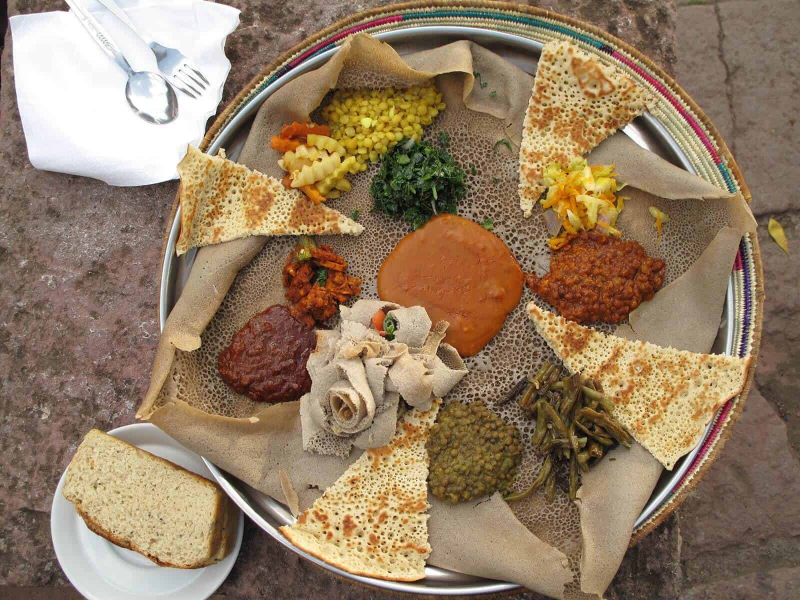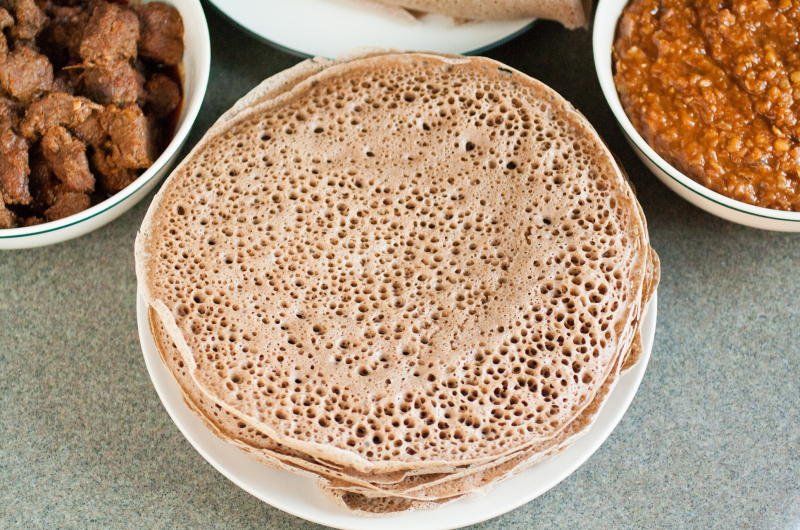Taita/Injera
Because everyone knows how excellent sourdough bread is for your health, the Eritreans have invented their own version, which they call "Injera." It is also a favorite cuisine of many people in Sudan, East Africa, and other parts of the world. Teff, an ancient grain found in Ethiopia's highlands, was once used to make Injera. Many historians believe that teff first existed in Egypt 3350 BC, based on the discovery of teff in Egyptian pyramids. According to another source, the pans used to cook Injera date back to 600 AD. Teff, on the other hand, isn't always available. People can substitute millet, sorghum, or barley if they are short on it.
Ingredients
- 2 cups teff flour, brown or ivory , or substitute a portion of it with some barley or wheat flour
- Note: If you're new to making injera I recommend using a combination of teff and barley or wheat as 100% teff is more challenging to work with.
- 3 cups water
- Note: This method involves wild yeast fermentation. See blog post for details about using commercial yeast as a starter (you'll use about 1/4 teaspoon dry active yeast)
Instructions
- Combine the teff flour and active dry yeast in a large bowl. Add 2 cups lukewarm water and whisk or, more traditionally, use your hand to mix everything together, making sure the mixture is absolutely smooth with no lumps. Cover with plastic wrap and let sit at room temperature until the mixture is bubbly and tastes sour like tangy yogurt, 36 to 48 hours. (It will start bubbling and rising in a matter of hours, but it can take anywhere from 36 to 48 hours to achieve a noticeable level of sourness, which is key to the flavor of the injera; see Cook's Note.) After about 36 hours, begin tasting the mixture; this will help you determine when it's just right and will help prevent it from souring too much.
- At this point, the batter will look separated and watery on top. If you shake the bowl a little, you should see some bubbles rising to the top. Add the self-rising flour and up to 1 cup of water a little at a time. Whisk or use your hand to thoroughly combine into a smooth, thin, pourable mixture with about the consistency of a slightly thicker crepe batter.
- Cover again and let sit for 1 hour.
- Heat a 10-inch nonstick skillet over medium heat for a few minutes. Have a lid for the skillet and a wire baking rack nearby. Whisk 1 teaspoon salt into the batter (it will bubble up). Pour 1/4 cup of the batter into the skillet, tilting and swirling to coat with a thin layer of batter. The batter should spread quickly and easily. (If it's too thick, whisk in a little more water.) Within a matter of seconds, you should start seeing small holes forming and the surface darkening as it cooks from the outside towards the center. When the injera is about 3/4 of the way cooked, cover the skillet and let steam for 1 minute. The injera is cooked when the edges are dry and lifting up from the pan. Carefully run a spatula underneath and transfer to the baking rack to cool completely. Repeat with the remaining batter.
- You can stack the injera only when they are completely cooled; otherwise, they will stick to each other. Wrap the stack of cooled injera with a dry, clean cloth or paper towels to keep them from drying out until ready to serve. Serve at room temperature, or microwave for 30 seconds to heat through.







